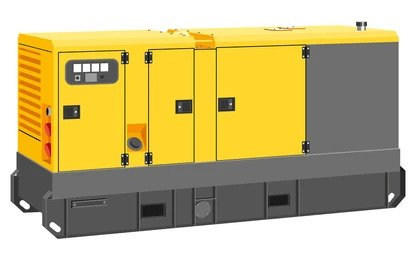Project Report For Diesel Generating Sets
Introduction
Project report for diesel generating sets is as follows.
A diesel generator has a diesel engine connected to an alternator, which is an electric generator, to provide electrical energy. However, certain types can also run on natural gas or other liquid fuels. The diesel compression-ignition engine is often designed to run on diesel fuel. These D G sets are required for many essential industrial, civilian, and defence applications.

Product & Application of Diesel Generating Sets
Diesel generating sets are utilized in locations without access to a power grid or as an emergency power source in the event that the grid goes down. It can also be sent to the electricity grid and utilized for peak loading, grid support, and other purposes.
The term “generating set” or “gen-set” refers to the assembled set of a diesel engine, a generator, and other ancillary components (such as base frame, canopy, sound attenuation, control systems, circuit breakers, jacket water heaters, and the starting system, etc.).
Gen-set capacities range from 8 to 30 kW (also 8 to 30 kVA single phase) for homes, small enterprises, and offices, while larger industrial generators, from 8 kW (11 kVA) up to 2,000 kW (2,500 kVA three phases), are used for large office complexes and factories.
A 2,000 kW set can be installed in a 40 ft. (12 m) ISO container along with the fuel tank, controllers, power distribution equipment, and all other necessary equipment to operate as a stand-alone power station or as a standby backup to grid power. To avoid low load or a lack of power, diesel generators must be suitably sized. Sizing is difficult because of the quirks of modern electronics, particularly harmonics and non-linear loads.
In most places where power outages are common, diesel generator sets are now available with a variety of automation and instrumentation capabilities that make them suitable for emergency operations. The installation of DG sets is required and recommended in a number of locations, including large hotels, hospitals, enterprises that use continuous processes, important furnace operations, etc.
These are intended for use in stationary and trailer-mounted designs for road construction, disaster management, construction operations in distant locations without power, etc.
Project Report Sample On Diesel
Generating Sets
Get Completely Custom Bankable Project Report
India has an excess of power-producing capability, but it lacks the necessary infrastructure to provide electricity to everyone who needs it. As of December 31, 2017, the utility electrical sector in India had one National Grid with a 330.86 GW installed capacity. 31.7% of the installed capacity was made up by renewable power plants.
However, in certain areas of the country, there is a shortage of suitable infrastructure for the distribution of energy to all the regions and to the entire population. The Indian government has introduced a program dubbed “Power for All.” By building and strengthening the essential infrastructure, this plan will provide a constant and uninterrupted supply of power to all homes, businesses, and industries by March 2019.
Market Potential Of Diesel Generation
The market for diesel generators was estimated at USD 18.74 billion in 2021, and it is anticipated to expand at a CAGR of 8.5% over the following five years.
Expenses

Product Cost Breakup

Reveneue Vs Expenses

Market Trend

According to demand, diesel engines and electrical alternators are purchased. With selection options such fuel to be used, duty conditions such as continuous or intermittent use, etc., the makes and capacities are chosen. In accordance with the requirements and engine alternator specifications, additional materials such as coupling, control panel instruments such as ammeters and voltmeters, RPM sensors and meters, power factor meters, and relays for fault and damage prevention are also purchased. The majority of these are offered on the domestic market.
This activity involves integration and assembly, therefore the primary steps are the assembly of the engine and alternator on the base frame, alignment of the major components, installation of the engine and electrical panel with reading metres, control relays, and emergency start/shutoff control.
The panel stands and electrical power panels can be purchased from suppliers or subcontractors, or they can be self-assembled.
These sets need to go through a lot of mechanical and electrical tests after they’re built to make sure they work in line with the customer’s agreed-upon standards. The applicable standards are tested on the DG sets, and reports are often sent to clients. For the objective, a full test bed is necessary.
Along with engine and generator panels, replacement parts, and operating/maintenance manuals, the tested and approved stationary set is packed and delivered in accordance with the transport requirements. Depending on the situation, the entire assembly with base frame may need to be mounted in a container frame, trolley, or skid for mobile generator sets.

